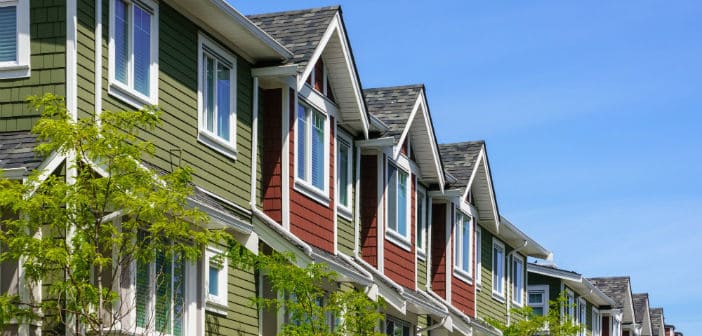Few people actively write about building a lifestyle. True, there are many blog posts that touch on lifestyle by roughly saying, “I invest in real estate so that I can eventually do these additional things that I love.” The focus is on building a real estate portfolio with the lifestyle as a result. And that’s the problem.
Today’s article is going to focus on building a lifestyle with the real estate portfolio or business as the result. What will be notably different in my article is that your desired lifestyle is the objective, not a number of units, not a “cash flow per door” number, and not even a “financial freedom” number. I want to turn the formula upside down.
We’re not investing in real estate and as a result, going to live an awesome lifestyle. Instead, we’re going to live an awesome lifestyle and as a result, invest in real estate.
How I Bought, Rehabbed, Rented, Refinanced, and Repeated for 14 Rental Properties
This is the dream right? Going from zero to 10+ rental properties, providing stable cash flow and long-term wealth for you and your family, and building a scalable business model to boot! Learn how this investor did just that, in this exclusive story featured on BiggerPockets!
Lifestyle is Secondary—Or is It?
There can be a high price to pay for financial freedom, especially if your means of getting there is investing in real estate or starting a business. Stress is high, money is tight, and your tenant just didn’t want to pay rent this month.
How many times have you met a business owner or real estate investor who is earning gobs of money yet openly complains about their lifestyle? With further prodding, you learn that these poor souls work insane hours, are always on call, and live in a constant jet stream of stress. But they earn $500k! Surely they are just cynical, as anyone earning that much must be happy.
Trust me, as a CPA who interacts with and provides services to plenty of folks earning much more than $500k, money quickly loses its value in regard to happiness. Money has a diminishing marginal return, meaning that after a certain point, each additional dollar you earn brings less happiness than the dollar before it. Research suggests this “peak” dollar figure is $70,000 annually.
An example of diminishing marginal return: You order 10 cheeseburgers (you freakin’ love cheeseburgers!), and you eat them all in one sitting. You haven’t eaten in a while, so the first one is delicious. It truly hits the spot. The second one is also delicious. It’s cooked medium rare, nice and juicy, perfectly seasoned. The third one is good, but you are starting to get full so it’s not as good as the first two. By the tenth cheeseburger, you’re so full that the sight of it repulses you. That’s diminishing marginal return in a nutshell. Each cheeseburger is the exact same, but their value steadily reduces as you consume them.
I’m always curious to hear the backstory of these folks who earn plenty of money yet are seemingly unhappy. Unsurprisingly, the stories are all relatively all the same: “I dreamed about living ‘X’ lifestyle in the future, so I started this business/ invested in real estate to hopefully get there.”
On the flip side, I also have clients earning a high amount of money who are perfectly happy. They love what they do, and more importantly, they love their day-to-day. When I ask them about their backstory, their stories generally go like this: “I had a lifestyle that I wanted to live today, and this business was what complimented that lifestyle.”
And that, my dear readers, is the key difference between living a life of full of wealth and happiness and one of just monetary wealth.
Lifestyle Starts Today
I learned this rather quickly in my career so I’m quite grateful: Lifestyle starts today, not tomorrow.
The key point I want to impress upon you throughout this entire article is that you don’t have to wait 15 years to achieve financial freedom and then begin living your desired lifestyle. Instead, I want you to think about the desired lifestyle you want to live right now and figure out what steps you can begin taking to implement said lifestyle immediately.
I’ve never met someone who wanted to be unhappy—yet many people are unhappy. And if you look closely, most of them have a common theme running throughout their life: Their desired future lifestyle dictates how they live today. They are sacrificing their present time for future happiness.
Now, I’m not suggesting that you drop everything and put forth little work or that you don’t think about the future lifestyle you’d like to achieve. What I am suggesting is that you begin implementing the lifestyle you want to live today and build everything else around you to supplement that lifestyle.
You’re still going to sacrifice plenty. You’re still going to stress and wonder if you’re doing the right thing. But the key difference is that we are focusing on crafting your lifestyle today, rather than setting a target number in our minds and saying, “Once I hit that, I’ll begin to live the lifestyle of my dreams.”

Where Do We Start?
Frankly, I don’t really know. I’m a CPA, not a guru trying to sell you my coaching program for $20,000 (I take check or credit—just kidding, of course).
What I do know is that crafting a lifestyle that I’ll enjoy on a day-to-day basis has been my goal from the get-go. I don’t want to wait 20 years to “retire” and live the lifestyle of my dreams. I want to do that today.
So I’m going to walk you through my logic of how I built assets around me to supplement the lifestyle I wanted to live. Hopefully you’ll be able to take something away from this and implement it in your own life.
The first step is to define the lifestyle you want. After my first few months working for a Big 4 accounting firm, I decided that the corporate lifestyle was not for me. I didn’t understand why one must commute to an office for work that could easily be done in the comfort of my own home. I thought the whole “dressing up” thing just got in the way of providing high quality work. The last time I checked, a suit and tie, while studies suggest makes you more confident, don’t improve your intellect nor work product.
Worst of all, I didn’t understand why people of high integrity and character were required to show up a 9:00 a.m. every day. If the deadlines are met, the quality of work is high, and the client is happy (the most important thing), then why does it matter when someone walks into the office? It seemed the performance measurements were backwards.
I disagreed with the values of the corporate lifestyle, how they held individuals accountable, and how they measured performance.
So I began to sketch out what my ideal lifestyle looked like. I knew that I wanted the flexibility to work in my pajamas at home. I knew I wanted to be able to work anywhere in the world seamlessly while traveling. And I knew that I wanted my performance to be measured by something other than whether or not I billed 1,800 hours out of the 2,080-hour work year (that’s called “utilization” in the accounting world).
I determined the best thing to do was to build assets around me that allows me to accomplish these things. The two asset classes I chose were real estate and a professional services business. But the key for living my lifestyle would be a laser focus on implementing systems that complimented my lifestyle.

Building Assets and Focusing on the Systems
When people focus on a number to achieve their desired lifestyle, the business systems get put on the back burner. Instead, you should be focusing on the systems you must implement in order to live the lifestyle you want today.
As I mentioned, I decided that investing in real estate and running a business would both complement the lifestyle I desired to live. The problem was that real estate typically requires a hands-on approach, and professional services firms usually have offices that clients can walk into—both of which go against my desired lifestyle of working anywhere in the world.
The real estate solution was rather simple to figure out. I knew I needed properties that cash flowed quite well, as I needed all of my expenses to be covered. The cash flow would allow me to “buy” teammates on the ground and put the asset in auto-pilot mode, allowing me to be 100 percent virtual. I could invest in areas I visited frequently or wanted to travel to once a year, and I’d require that my property manager send me a video walkthrough of my units quarterly.
On the buy side, I’d research the city’s economics like crazy to make sure the local economy was growing and not subject to undue risk. I’d use Google street view to explore neighborhoods. I’d place offers sight unseen and only travel to the property post-inspection.
Using these “desktop” methods, I’ve picked up two 3-unit properties. These two properties cash flow well and cover most of my monthly living expenses, though I don’t actually use the cash flow for my monthly living expenses. The point is, if the going gets tough, I can rely for a short amount of time on these properties.
The business solution was a bit tougher. When I hammered out what I wanted my lifestyle to look like, I knew there were very few corporate jobs that would support it. The next step was to start a business, and since I had a CPA, I naturally started a CPA firm.
It was tough to figure out how to build a CPA firm that would support my lifestyle. My biggest obstacle was the preconceived notion that clients would want to walk into a CPA’s office and shake his/her hand. But I knew the lifestyle I was crafting so I laid out the ground rules for my CPA firm:
- I will not meet clients face-to-face. Instead, we’ll hold meetings over the phone or video calls. This goes for local clients as much as non-local.
- My marketing will be content rich. I will develop awesome content that people derive massive value from. A potential client will read my articles and “test me out” prior to ever scheduling their first consultation.
- I will develop business systems that will support a virtual practice. Document sharing must only be done in the cloud. I will not accept paper documents.
- I will hire employees and not require them to be local to me nor come into an office. They will enjoy the same lifestyle I do. This means they have to want to live the lifestyle I’m living. I will also need to develop metrics that focus on results, not the amount of time an employee works.
With that, I was off to the races. I started making massive strides to get content out there, and I used BiggerPockets as my growth platform. It was tough and took a lot of sacrificing, but two years later, I have a firm that supports my desired lifestyle.

Conclusion
My point in telling you this is that I didn’t say, “I want my lifestyle to be ‘X’ in the future, so I must build a business to reach ‘$Y’ in annual revenue. At that time, I’ll be able to live the lifestyle I want to live.” Instead, my method of thinking is, “I want to live ‘X’ lifestyle and I’m going to build ‘Y’ assets and systems that complement the lifestyle I want to live.”
With my way of thinking, you won’t be putting your desired lifestyle off into some distant future point. Instead, you’ll start thinking of ways you can move toward living your desired lifestyle today. Sure, it takes sacrifice and hard work. It took me two years to get my business to a point where I could actually live the lifestyle I was actively trying to build. But in those two years, I had a laser focus on building a business that complemented the lifestyle I wanted to live. My virtual lifestyle was the objective; the real estate and the business were the results.
Many people make the mistake of letting their lifestyle be the result and their investing or their businesses the objective. Don’t do that. Focus on building a lifestyle portfolio and business. You’ll be much happier in the end.
We’re republishing this article to help out our newer readers.






